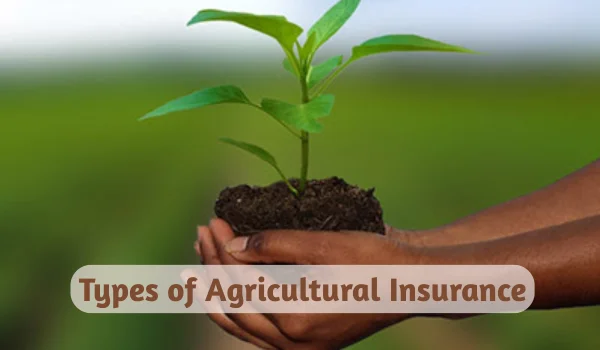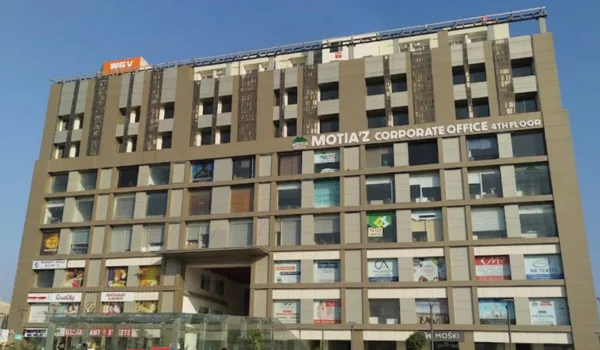Agriculture is among the riskiest economic activities. Crop failures due to drought, excessive rain, hailstorms, pests, diseases, floods, or market fluctuations can wipe out a farmer’s income and push smallholders into debt. In India, where a large portion of the population depends on farming and where monsoon variability is high, agricultural insurance is a critical tool to provide a safety net, maintain food security, support credit flows, and stabilize rural incomes.
Agricultural insurance broadly refers to insurance products tailored for farming activities—protecting crops, livestock, aquaculture, forestry, etc.—against defined perils. Unlike standard insurance for property or life, agricultural insurance faces challenges: outcomes are correlated (many farmers suffer loss in same region), moral hazard, adverse selection, measurement/assessment difficulties, and high administrative costs.
Below we explore the types of agricultural insurance, their features and Indian experience, and practical considerations.
Key Risk Types in Agriculture
Before delving into types of insurance, it helps to understand the nature of risks:
- Yield risk: The actual crop yield is lower than expected due to weather, pests, disease, poor soil, etc.
- Price risk: Market price of the crop falls below a threshold, making produce unprofitable even when yield is good.
- Natural calamities / catastrophic risk: Floods, droughts, cyclones, hailstorms, landslides, unseasonal rain, etc.
- Localized risks: e.g. hail damage to one farm (not entire area).
- Post-harvest risk: Damage after harvest (while in the field/storage) due to floods, pests, etc.
- Livestock risk: Death, disease, theft, or injury of animals
- Aquaculture / fisheries risk: Mortality of fish/shrimp due to disease, water quality, floods, drought
- Forestry risk: Damage to trees from storms, pests, fire
Insurance designs attempt to allocate, pool, and share these risks.
Broad Categories of Agricultural Insurance

Agricultural insurance products can be categorized in several ways. Below is a useful taxonomy, along with India-specific illustrations.
- Crop Insurance
This is the most common and well-known form of agricultural insurance. It protects farmers against crop losses or yield shortfalls. Within crop insurance, there are subtypes:
1.1 Multiple-Peril Crop Insurance (MPCI) / Comprehensive Crop Insurance
This is a broad cover which protects against multiple perils: drought, flood, hail, pests, disease, storms, etc. It is usually based on yield. India’s Pradhan Mantri Fasal Bima Yojana (PMFBY) is a flagship example, offering comprehensive risk coverage for notified crops.
In this model:
- The insured covers a defined “area” (e.g. district / block) approach (i.e., group approach).
- Yield data from crop cutting experiments (CCEs) is used to assess losses.
- If actual yield falls below a threshold (guaranteed yield), farmers receive indemnity.
- Exclusions often apply (e.g. war, negligence, certain preventable risks).
- Premium is subsidized by government for small and marginal farmers.
Advantages: broad protection, familiar to farmers, centralized administration.
Challenges: basis risk (farmer suffers loss even if area yield threshold not crossed), delays in claim settlement, moral hazard.
1.2 Yield-based / Area Approach Schemes
Here, the insurance payout is triggered when average yield in a defined area falls below a benchmark (trigger yield). Individual farmer’s actual yield is not measured. This is more practical and lower cost, but can lead to “basis risk”: a farmer who experiences loss may not receive compensation if area yield is okay. India’s older NAIS (National Agricultural Insurance Scheme) used this approach.
1.3 Weather Index / Parametric Insurance
Instead of measuring yield or crop damage, compensation is triggered by a weather index crossing a threshold — e.g., rainfall falling below X mm during a period, or extreme temperature, or cumulative moisture deficit.
Variants:
- Rainfall index insurance
- Temperature index insurance
- NDVI / Satellite index insurance: Uses satellite-derived vegetation index (e.g., NDVI) to infer plant health and losses.
Pros: quick payouts, low verification cost, limited moral hazard.
Cons: basis risk (index may not reflect true farm-level damage), design complexity, data dependence.
1.4 Revenue Insurance / Income Insurance / Crop Revenue Insurance
This covers not just yield risk but price risk as well. Under this, compensation is given when revenue (yield × price) falls below a guaranteed level. Thus, even if yield is okay but price collapses, coverage is triggered.
This is less common in India, but conceptually more comprehensive.
1.5 Supplemental / Hail / Named Peril Insurance
This is narrower coverage: e.g. hail damage insurance or cover for specific risks (hail, fire, lightning) rather than all perils. In regions with hail risk, farmers may purchase crop-hail insurance. (Globally, this is common; see “crop-hail” in e.g. Investopedia)
This can be added as a rider or secondary cover.
1.6 Post-Harvest / Storage Insurance
Some policies cover damage to crops after harvesting but before sale—due to flood, pests, storage issues. This is important in India where storage infrastructure is weak.
1.7 Area Yield Plus / Hybrid Approaches
Hybrid designs combining area approach + parametric triggers + individual yield adjustments attempt to balance trade-offs.
Livestock Insurance
Livestock insurance protects farmers/rearers against death, disease, theft, disability, or permanent loss of animals. It is vital where animals (cattle, buffalo, sheep, goats, poultry, etc.) form part of livelihood.
In India, the Livestock Insurance Scheme operates with government subsidy to encourage adoption.
Key design features:
- Insured animals are identified (tagged), and their “insured value” is determined (market value, production value).
- Cover is typically for a defined period (e.g., one year).
- Risks covered include accidental death, illness, disease, surgical operations, theft.
- Certain waiting periods or exclusions apply (e.g. prior diseases).
- Premium subsidy is provided by central & state governments.
Challenges: large number of small animals (goats, poultry) increases administrative cost; veterinary verification; moral hazard and fraud.
Aquaculture / Fisheries / Pisciculture Insurance
Covers fish, shrimp, or other aquatic product farmers against risks like disease outbreak, water quality degradation, pollution, floods, drought, predators, storms. This is increasingly relevant with intensification of aquaculture.
Design features:
- Insured unit could be pond, tank, water body, or stock in specific unit.
- Trigger mechanisms: direct measurement of stock loss, or parametric (e.g. water temperature, dissolved oxygen), hybrid.
- Coverage sometimes includes infrastructure (pond lining, aerators) damage.
- Premiums tend to be higher due to high mortality risk, disease correlations, data uncertainty.
Forestry / Plantation Insurance
Protects trees, plantations, orchards from risks like storms, fire, pests, disease, wind, drought. This is relevant for commercial forestry or plantation crops (tea, rubber, coconut).
Key points:
- Trees have long gestation; insurance may span many years.
- Loss measurement is complex (tree age, species, growth stage).
- Some insurance policies cover replanting cost, not full commercial value.
- Parametric or satellite-based indices may be used in some cases.
Hybrid / Composite / Package Insurance
Some insurance products are packaged to cover multiple agricultural risks (crop + livestock or crop + post-harvest or crop + price risk). These bundles aim for convenience and coverage breadth. For example, some newer Indian ‘unified package insurance’ pilot schemes incorporate multiple perils and combined risks.
Also, insurers may allow add-ons/riders (for example, cover for hail, replanting cost, storage, input cost) along with standard policy.
India’s Agricultural / Crop Insurance Schemes: Overview & Examples
India’s government plays a major role in agricultural insurance (especially crop insurance). Some landmark programs:
- National Agricultural Insurance Scheme (NAIS / mNAIS): This earlier scheme used yield-based area approach for food crops, oilseeds, horticultural crops.
- Pradhan Mantri Fasal Bima Yojana (PMFBY): Launched in 2016 to replace NAIS and its variants, offering comprehensive cover, subsidized premiums, earlier claim settlement, and flexibility.
- Restructured Weather Based Crop Insurance Scheme (RWBCIS): A weather-index insurance scheme focusing on weather triggers for some crops.
- Unified / Package Insurance Pilot: Some states pilot unified package insurance covering multiple perils beyond PMFBY.
- Coconut Palm Insurance Scheme (CPIS): Targeted cover for coconuts / palm crops under specific conditions.
In practice, under PMFBY:
- Coverage includes prevented sowing / planting risk, standing crop losses, and post-harvest losses (for insured crops).
- Premium rates are fixed (e.g., 2% for Kharif food grains, 1.5% for Rabi food grains, 5% for horticulture / commercial crops) (subject to updates). The government subsidizes the difference.
- State governments choose implementing agencies (insurance companies) by tender.
These schemes have expanded coverage but also face challenges (discussed later).
Comparative Features & Trade-offs
Below is a comparison of different types from an insurer / policymaker perspective:
| Type | Trigger / Basis | Advantages | Limitations / Risks |
| MPCI / Comprehensive (yield) | Measured yield shortfall | Broad coverage, familiar model | High administrative cost, delays, basis risk |
| Yield / Area Approach | Area average yield | Simpler, lower cost | Basis risk (farmers suffer loss but no payout) |
| Weather Index / Parametric | Weather index deviation | Fast payouts, low verification cost | Basis risk, index design complexity, data reliability |
| Revenue / Income Insurance | Revenue shortfall (yield × price) | Covers both yield and price risk | Complex pricing, data demands |
| Crop-Hail / Named Peril | Specific peril damage | Simpler, lower premium | Limited cover, doesn’t cover multiple risks |
| Livestock Insurance | Death / disease / theft | Protects animal assets | Verification cost, moral hazard, many small units |
| Aquaculture / Fisheries | Stock loss / parametric triggers | Tailored cover for aquatic risk | Data uncertainty, high correlation risk |
| Forestry / Plantation | Tree damage / parametric triggers | Long-term cover for plantations | Valuation complexity, gestation, high cost |
| Hybrid / Package | Combination of triggers | More comprehensive cover | Higher premium, design complexity |
Practical Considerations & Challenges
While the types above are conceptually robust, real-world implementation in India faces several constraints:
- Basis risk: Particularly in area-based and index schemes, farmers may suffer loss but get no compensation due to mismatch in trigger vs actual.
- Data & Measurement: Accurate yield data, weather station coverage, satellite data, and crop cutting experiments (CCEs) are crucial but often limited.
- Timely claim settlement: Delays reduce trust in schemes.
- Moral hazard & adverse selection: Farmers might under-invest in risk mitigation once insured, or only high-risk farmers enroll.
- Administrative cost & scale: Many small farms increase cost per farmer.
- Awareness & literacy: Farmers may not understand scheme details, leading to low uptake or misuse.
- Coverage gaps / exclusions: Some perils are excluded; non-loanee farmers sometimes have lesser benefit.
- Sustainability of subsidy: Heavy government subsidy is often needed to make premiums affordable.
- Coordination among state and central governments: Agriculture is a state subject; therefore scheme implementation requires cooperation.
- Climatic change: Changing weather patterns may invalidate historical data, making triggers less reliable.
These challenges are being addressed gradually via technology (satellite, drones, IoT), better data analytics, more localized schemes, mobile apps for claim intimation, etc.
Best Practices & Innovations
To make agricultural insurance more effective, several innovations and practices are promising:
- Microinsurance tailored to very small and marginal farmers (low premium, simple structure).
- Satellite / remote sensing & GIS for area yield estimation, NDVI indices, anomaly detection.
- Block-level / farm-level parametric indices to reduce basis risk.
- Public-private partnerships (PPP) combining government subsidy and private insurer efficiency.
- Mobile-based claim intimation & assessment (photos, GPS tagging).
- Tiered / layered insurance: catastrophic risk borne by reinsurer, mid-level by insurer, lower-level by farmer.
- Bundling with credit / input supply: coupling insurance with seed/fertilizer distribution or credit provision.
- Weather stations & IoT sensors in local farms.
- Better crop modeling & predictive analytics for premium pricing and trigger calibration.
- Flexibility & choice: letting farmers pick between yield, index, revenue models.
How to Choose an Agricultural Insurance Type (for a Farmer / Policy Planner)
If you were advising a farmer or policy planner, here’s a stepwise guide:
- Identify main risks: Is yield risk dominant? Or is market (price) risk also significant? Is post-harvest damage a concern?
- Scale & geography: In clustered areas, area-based or parametric schemes may work. For scattered farms, individual yield-based may suit.
- Data availability: Does the region have reliable weather stations, yield history, satellite data?
- Affordability: How much premium subsidy is available? What premium can farmers bear?
- Speed of settlement requirement: If quick payouts are needed, index/parametric models have advantage.
- Hybrid coverage needed: Would combining crop + livestock + post-harvest be beneficial?
- Administrative capacity: Can local agencies handle yield experiments, vetting, claims assessments?
- Communication & trust: Farmers must understand triggers, exclusions, claims process.
- Review & adapt: Monitor performance, basis mismatch, claim ratios, and refine models periodically.
Summing Up
Agricultural insurance is not one-size-fits-all. The diversity of farming systems, heterogeneous risks, data constraints, and financial limitations demand a portfolio of insurance types—yield-based, parametric, revenue-based, livestock, aquaculture, forestry, and hybrid models. In India, the evolution from area yield schemes (NAIS) to more flexible, technology-driven programs (like PMFBY, parametric pilots) reflects an ongoing effort to strike the right balance between coverage, cost, timeliness, and sustainability.
From a farmer’s perspective, the best insurance is one that is reliable, understandable, affordable, and timely in settlement. From a policymaker viewpoint, the goal is to design models minimizing basis risk, scaling cost-effectively, and leveraging technology and private-sector efficiency.





